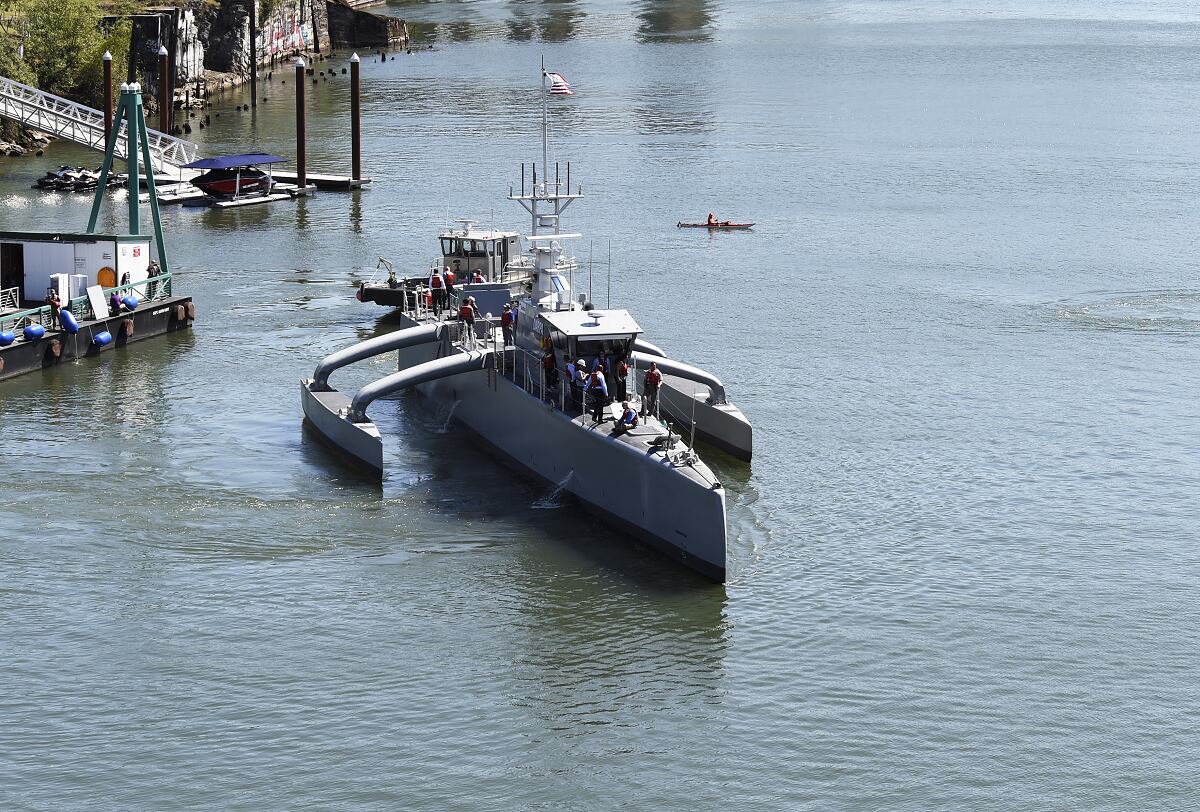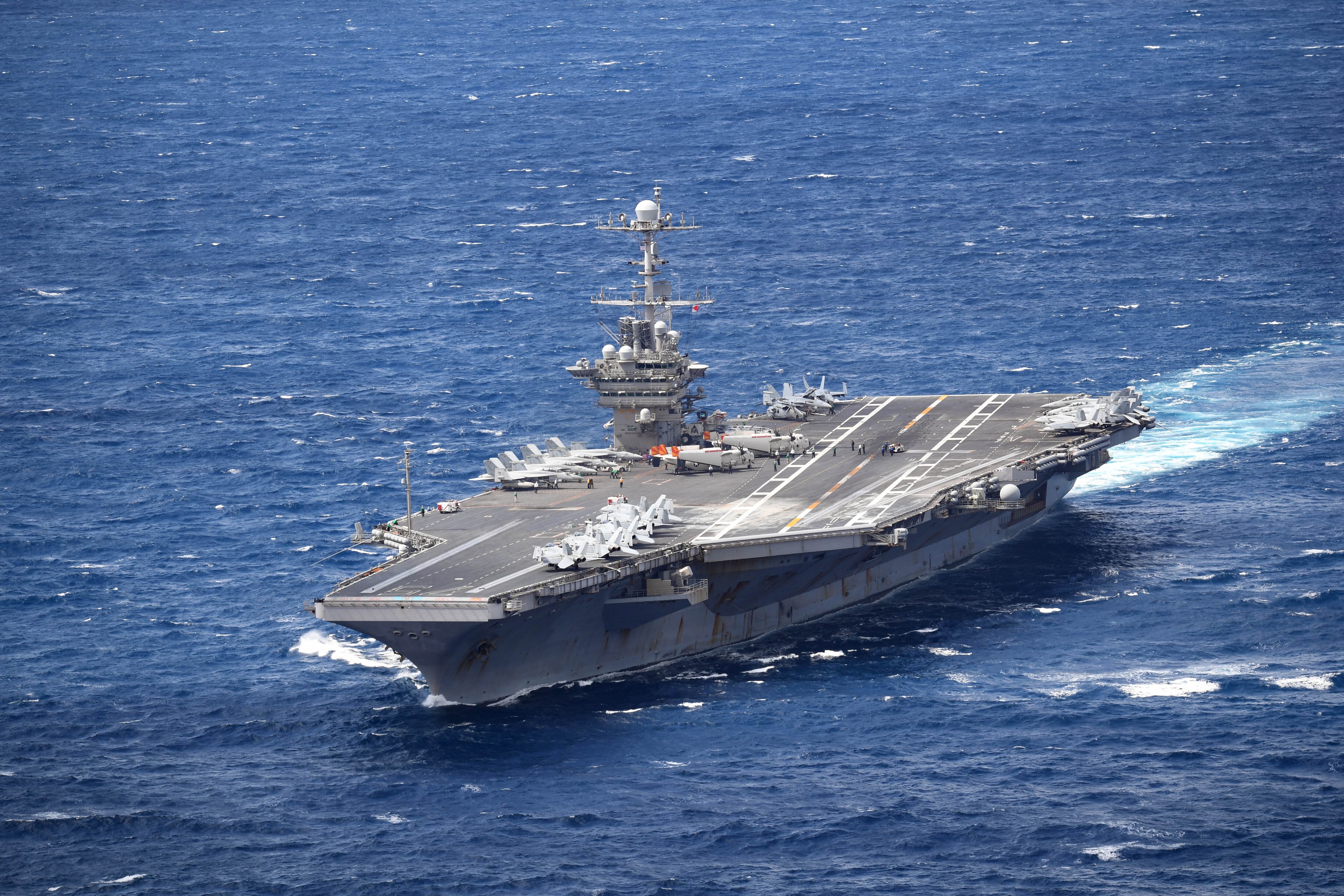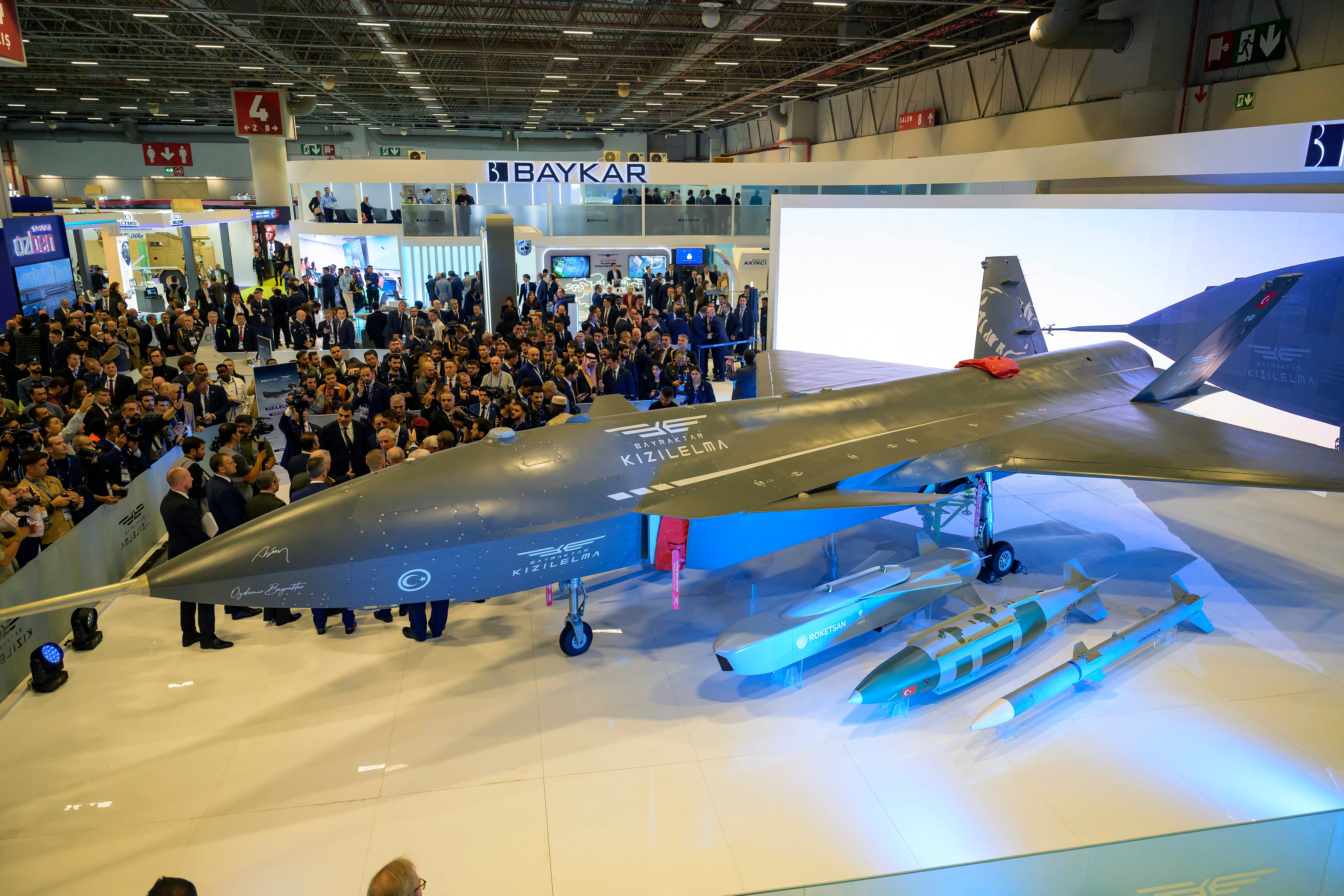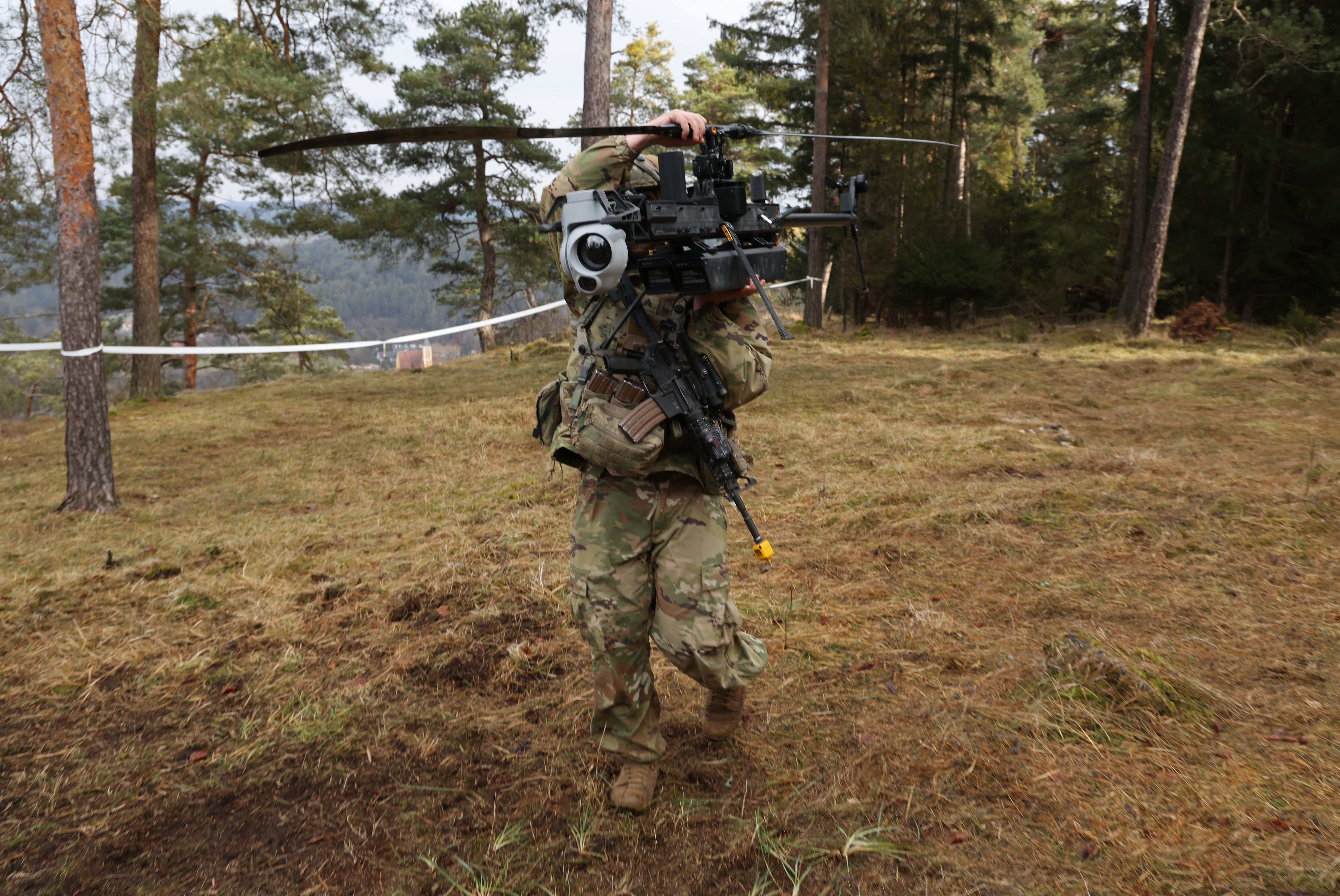WASHINGTON — The U.S. Navy’s newfound zeal for unmanned surface vessels has been met by skepticism in Congress.
Congress’ long-delayed National Defense Authorization Act came back from negotiations among lawmakers with limits on the Navy’s plan for unmanned surface vessels, with authorizers halving the obtainable number of large unmanned surface vehicles, or LUSV, the service requested.
The service asked for two of the LUSVs, with plans to buy eight more over the five-year projection known as the Future Years Defense Program, or FYDP. The NDAA also allows the Navy to buy two medium unmanned surface vessels, which the Navy envisions as autonomous sensor platforms for functions such as anti-submarine warfare.
The drive toward integrating unmanned surface vehicles in the force, which Navy officials suggested could make up a significant portion of the future fleet’s force structure, was kicked off in earnest with the rollout of the 2020 budget. Senior Navy officials have talked about the LUSV as a kind of external missile magazine that can autonomously navigate to and integrate with the force, then shoot its missiles and return for reload, keeping the big manned surface combatants in the fight and fielded longer.
RELATED

But the Defense Department likely drew unwanted attention to the program by using investments in this kind of unmanned technology as part of the justification for canceling the refueling of the aircraft carrier Harry S. Truman, meaning the ship would’ve been decommissioned with half its intended 50-year hull life remaining, according to a source familiar with the authorizers’ thinking on the issue.
“The linkage with the Truman refueling shined a spotlight on the USVs,” the source said. “It’s important to remember that in 2019 there were zero LUSVs in the budget. Then in 2020 there were 10 at a cost of $3 billion over the FYDP. That kind of ramp-up will attract attention in any budget.
“In view of uncertain LUSV concepts of operations, requirements, technical maturity — including many [first-of-a-kind capabilities] — the contrast between a proven aircraft carrier and its air wing and unproven unmanned surface vessels is stark.”
The idea of using the Truman savings to invest in unmanned technology was encouraged by the Cost Assessment and Program Evaluation office inside the Office of the Secretary of Defense, and it was supported by both former Defense Secretary Jim Mattis and later by acting Defense Secretary Patrick Shanahan.
The plan died in a wave of bipartisan skepticism and was ultimately put to bed by a tweet from the president, which was followed by the resignation of CAPE director Bob Daigle.
Congressional skepticism toward investments in unmanned tech appears unlikely to dissipate with a new budget cycle.

Slow and steady
Navy leaders have maintained that they need a critical mass of the unmanned surface vessels to make rapid progress on things such as concepts of operations and integrating new technologies. The LUSV is intended to be adapted from a commercial design using relatively mature autonomous technology, things that the Defense Department has worked with for some time now.
But leaders have acknowledged congressional skepticism in public comments. In October, the Navy’s top requirements officer told an audience at the Expeditionary Warfare Conference in Annapolis, Maryland, that the platform will be difficult to develop.
“I don’t want to be Pollyannaish about this: It’s going to be hard work,” said Vice Adm. Jim Kilby, the deputy chief of naval operations for war-fighting requirements and capabilities. “And when we brief this, we go right to the upper right hand corner of the difficulty spectrum.
“So we have been working with the acquisition community to roll out a test and competence program so we can get something to the war fighter that they’re confident they can use.”
What Congress wants to see is more gradual development and proof of concept before it commits more funding, Kilby told reporters after his remarks.
"What I think they are interested in is ‘Block I will have the following capabilities and we’re going to test them in the following manner, and you can see the results of that test,’ ” Kilby said. “Then we are going to move on to Block II and Block III. They’re interested in us having a ramp-up and build confidence, achieve those capabilities and they can follow that.
“Let’s talk about that first instantiation: Maybe that’s going from point A to point B, follow [the International Regulations for Preventing Collisions at Sea], not hit anything, follow the rules of the road. Well, that serves a number of purposes from a deception standpoint. And if those platforms can do that, then maybe I can add capability as I prove out that concept.”
Kilby pointed to the Surface Development Squadron, saying that its tasking is to develop an experimentation regime that can help the Navy hone in on both the requirements and the concept of operations for the new drone ships. The Navy recently transferred control of the Sea Hunter drone ship to the Surface Development Squadron.
“We’ve got a lot of work to do to inspire confidence in Congress that we know what we’re doing, and we are executing to plan,” Kilby said.
David B. Larter was the naval warfare reporter for Defense News.








